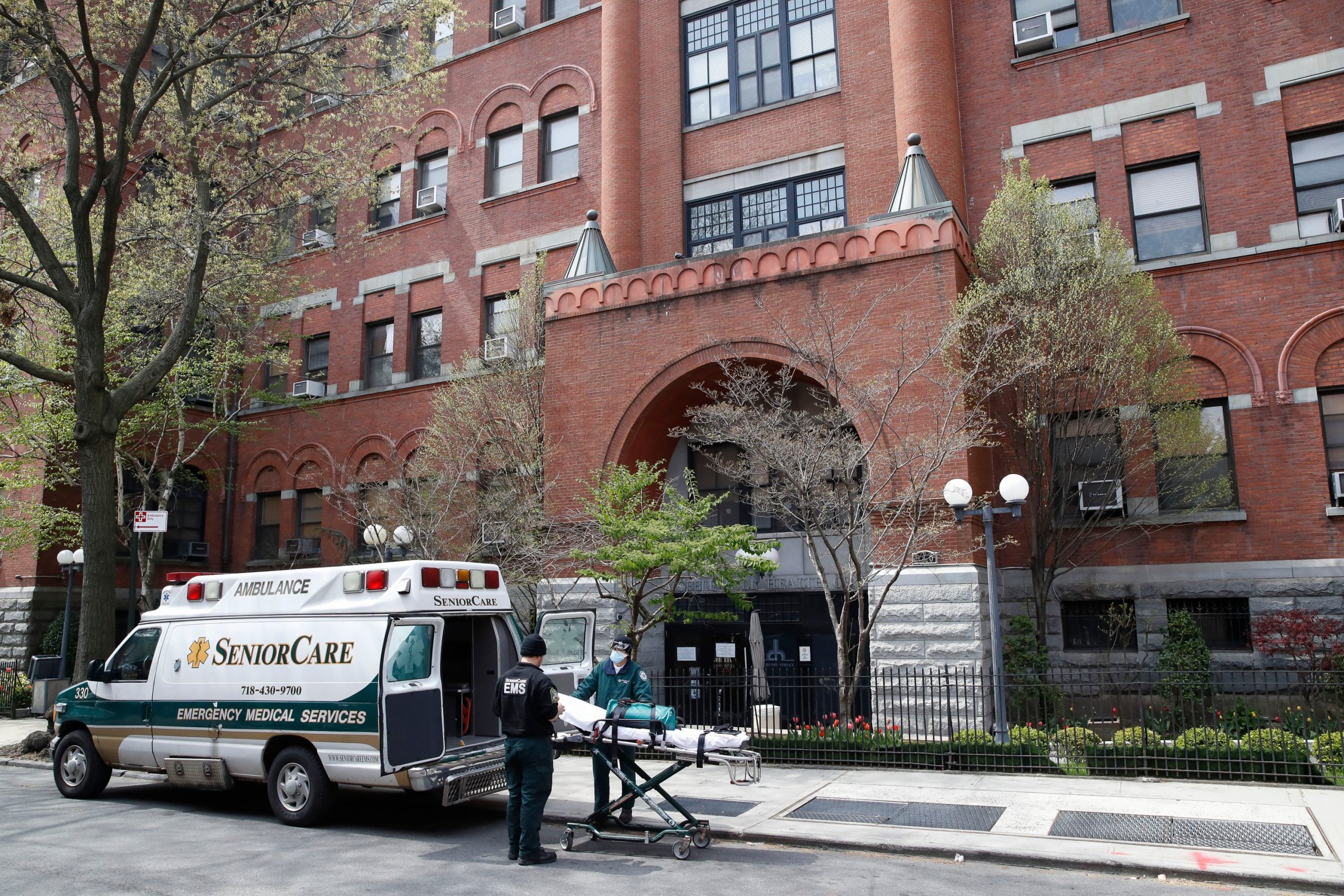New York state is reporting more than 1,700 previously undisclosed deaths at nursing homes and adult care facilities as the state faces scrutiny over how it’s protected vulnerable residents during the coronavirus pandemic.
At least 4,813 people have died from COVID-19 in the state’s nursing homes since March 1, according to a tally released by Gov. Andrew Cuomo’s administration late Monday that, for the first time, includes people believed to have been killed by the coronavirus before their diagnoses could be confirmed by a lab test.
Exactly how many nursing home residents have died remains uncertain despite the state’s latest disclosure, as the list doesn’t include nursing home residents who were transferred to hospitals before dying.
The revised list shows that 22 nursing homes, largely in New York City and Long Island, have reported at least 40 deaths.
Parker Jewish Institute in Queens and Isabella Geriatric Center – one of New York City’s largest nursing homes with 705 beds – have reported the highest number of deaths: 71 and 64, respectively.
Audrey Waters, a spokeswoman for Isabella Geriatric Center, said in an email last week: “Isabella, like all other nursing homes in New York City, initially had limited access to widespread and consistent in-house testing to quickly diagnose our residents and staff. This hampered our ability to identify those who were infected and asymptomatic, despite our efforts to swiftly separate anyone who presented symptoms.”
In many cases, the state’s new figures reveal many more deaths than previously reported at nursing homes. Isabella Geriatric Center had 13 COVID-19 deaths reported as of May 1, and now reports the deaths of 21 patients who were confirmed to have COVID-19 along with 43 deaths of residents presumed to have COVID-19. And Ozanam Hall of Queens now is reporting a total of 53 deaths, up from just 10.
Several veterans’ homes have been especially hard-hit by the virus: The Long Island State Veterans Home has reported 53 deaths, including 48 confirmed and five presumed COVID-19 deaths. The New York State Veterans Home at St. Albans in Queens has reported 33 deaths while New York State Veterans Home at Montrose in Westchester says 22 residents have died.
Cuomo promised on March 2, when only a handful of coronavirus cases had been reported in New York, to make a “special effort” for nursing homes and congregate homes housing senior citizens. The state directed nursing homes to screen visitors and consider modifying visiting hours on March 6, and later suspended visits to nursing homes statewide March 12.
But the governor is facing criticism over his administration’s role in overseeing and supporting New York’s overwhelmed, state-regulated nursing homes as many have struggled to treat COVID-19 patients, amass enough personal protective gear or ensure adequate staffing.
Advocacy groups for the elderly and family members of nursing home residents have called for greater transparency over COVID-19 cases at each state-regulated nursing home and criticized an April 1 state law granting some immunity to hospitals and nursing homes from civil and criminal liability. They also questioned the state’s March 25 policy that says “no resident shall be denied re-admission or admission to a nursing home solely based on a confirmed or suspected diagnosis of COVID-19.”
The governor and his administration have defended that policy as ensuring nursing home residents aren’t left lingering in hospitals or without anywhere else to go. Cuomo’s spokesman tweeted Monday that the policy follows federal Centers for Medicare and Medicaid Services guidance. But the federal guidance says only that a nursing home “can accept a resident diagnosed with COVID-19” so long as the nursing home can follow federal guidance on transmission precautions.
Cuomo has also said the state has facilities that can house transferred COVID-19 nursing homes patients, and he recently said that nursing homes that tell the state up-front that they can’t care for a COVID-19 patient wouldn’t face regulatory scrutiny. His administration hasn’t responded to a request for questions on the state’s current capacity to care for COVID-19 nursing home residents and whether nursing homes were informed.










Discussion about this post